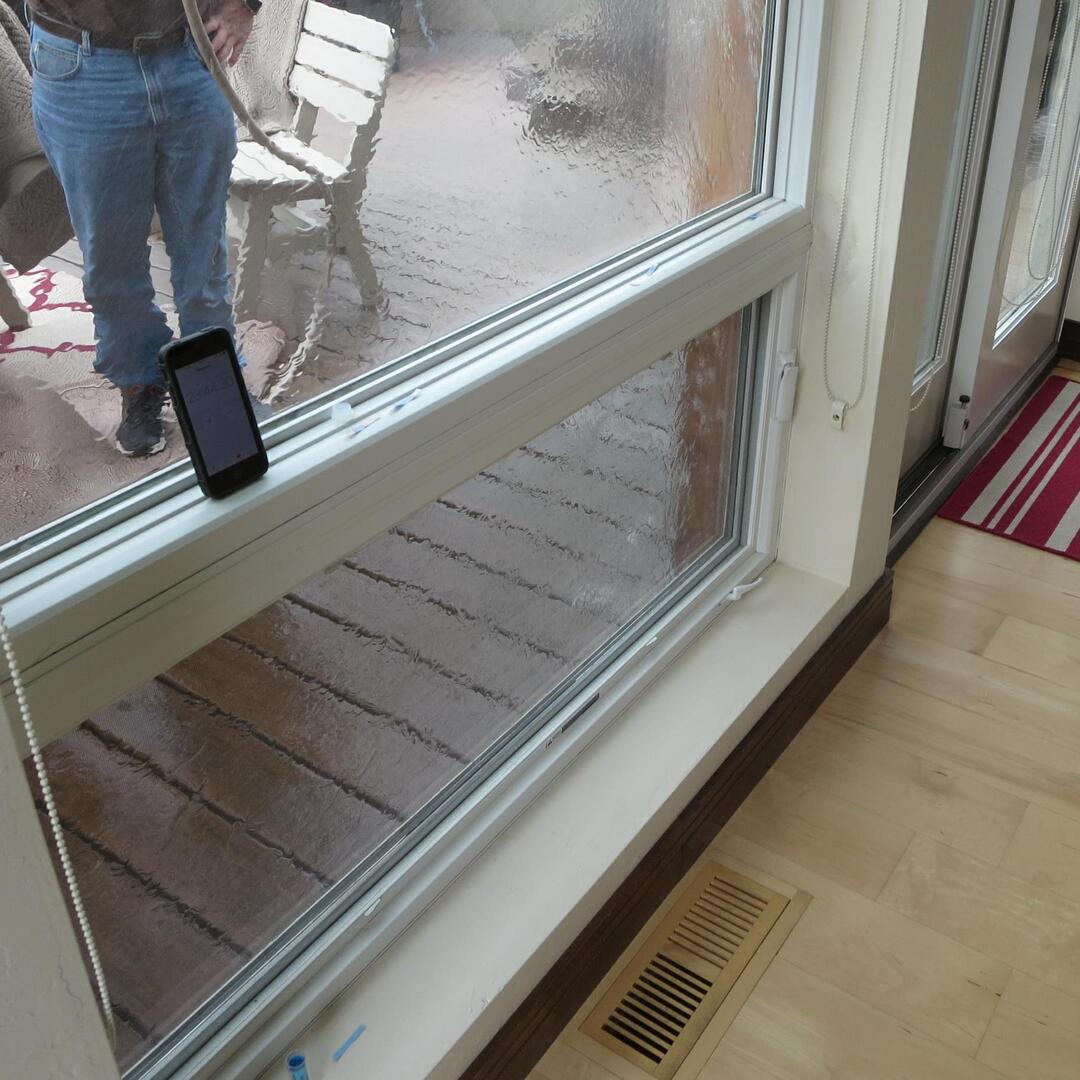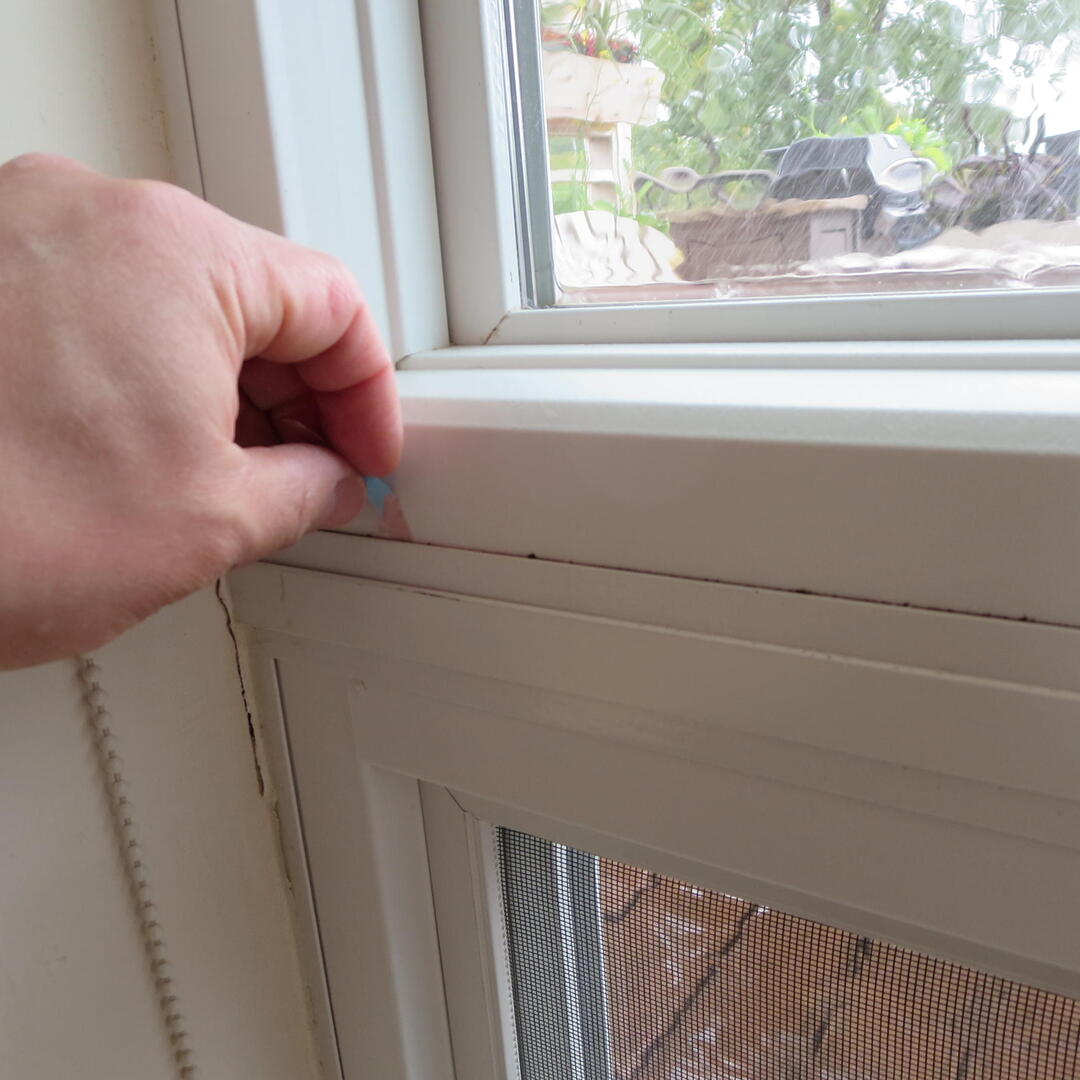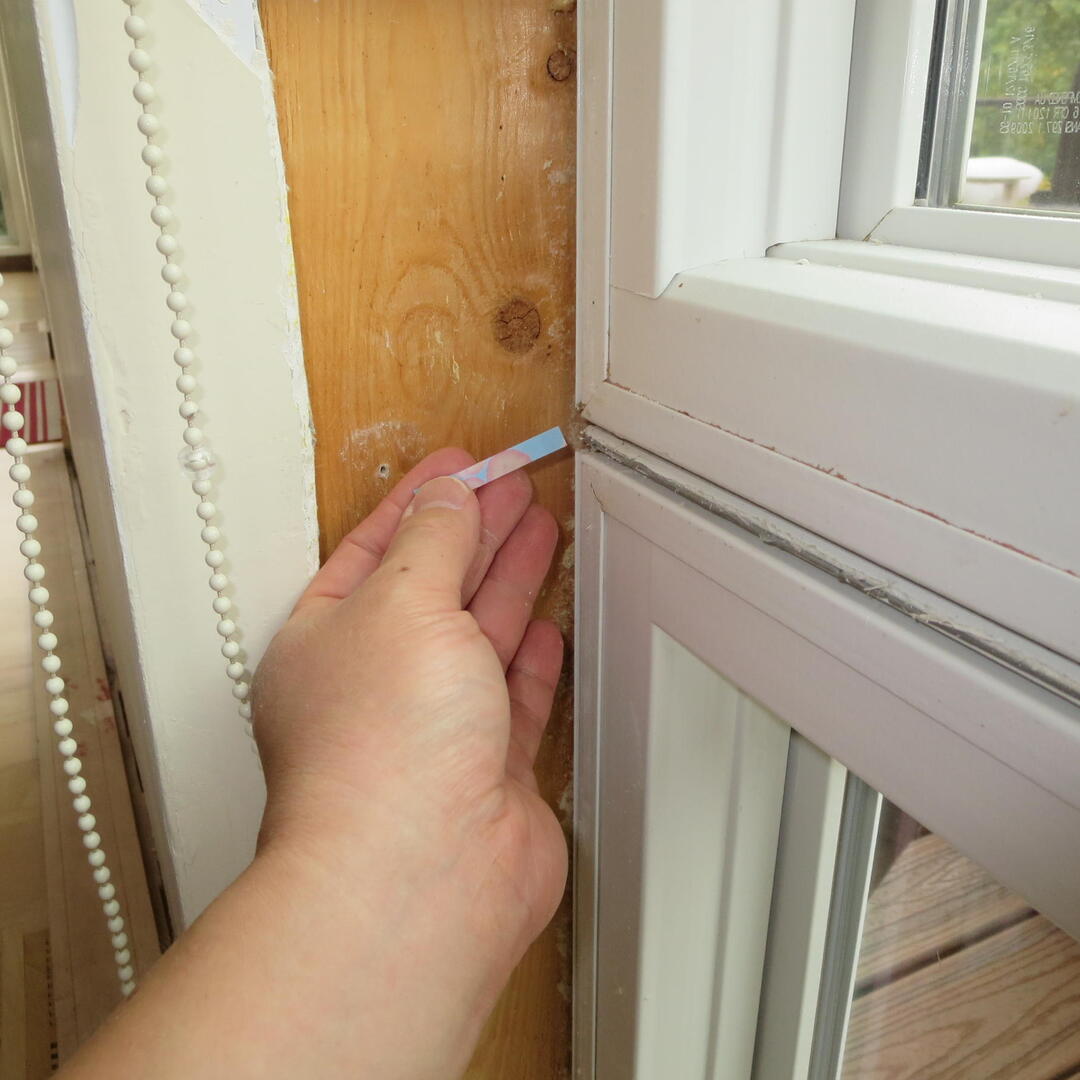BSC was asked to examine bulk water intrusion issues occurring at windows (and window-wall interfaces) in recently built residential construction. The residences were a modern design, with low-slope roofs, no overhangs, and multiple cladding types and colors; the exterior wall sheathing was either OSB structural panel or structural rigid foam, with the exterior surface taped as the water control layer (drainage plane). The client reported that the window leaks typically began to occur over time, after the first year of operation.
Closer examination revealed that most of the windows were factory-mulled units, with interior gypsum board/drywall returns, on all four sides. Existing damage was typically found at the bottom/sill corner of windows, and at the jamb mull joint. A sill flashing (adhered membrane tape in the window rough opening) extends roughly 6” up from the sill, but there is no sloped sill or backdam detail.
The windows were tested via water spray and building depressurization to simulate the effect of wind-driven rain, similar to conditions causing the water leakage problems. This testing indicated that water accumulated at the factory mull and ran to the interior at the jambs, wetting interior finishes. In addition, the lack of a sill pan backdam or sloped sill meant that incidental water leakage was not drained out via the sill pan flashing. Additional testing using water injection past the fixed sash gasket demonstrated another water leakage path consistent with the interior leakage problems. BSC’s recommendations included identification of the source of the water leakage, and recommendations on ameliorating the problems.









